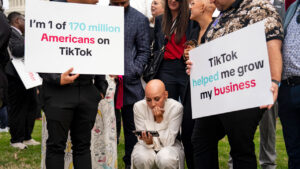Why should any organization prioritize diversity over merit? New book, Why Diversity, Equity, and Inclusion Matter: Challenges and Solutions expounds on the idea that a set of diverse people provide a greater diversity of ideas that can help solve complex problems facing organizations in a competitive environment. Several chapters examine the effect of a lack of diversity in organizations (board diversity, partner diversity among auditors, etc.) on organizational outcomes. This research unveils a pivotal insight: diversity holds the potential to improve outcomes, but only under conditions fostering a dynamic exchange of ideas; otherwise, it risks devolving into dysfunction. Organizational effort needs to be directed to incentivizing diverse team members to share their ideas productively and meaningfully, to avoid dysfunctional polarization.
Credit: World Scientific
Why should any organization prioritize diversity over merit? New book, Why Diversity, Equity, and Inclusion Matter: Challenges and Solutions expounds on the idea that a set of diverse people provide a greater diversity of ideas that can help solve complex problems facing organizations in a competitive environment. Several chapters examine the effect of a lack of diversity in organizations (board diversity, partner diversity among auditors, etc.) on organizational outcomes. This research unveils a pivotal insight: diversity holds the potential to improve outcomes, but only under conditions fostering a dynamic exchange of ideas; otherwise, it risks devolving into dysfunction. Organizational effort needs to be directed to incentivizing diverse team members to share their ideas productively and meaningfully, to avoid dysfunctional polarization.
Synopsis
The first chapter of this book delves into the implications of how merit is defined and its relevance in diverse contexts. Is individual merit intrinsically linked to job performance, or does it exist in isolation? Examining unequal practices, the initial chapters dissect the corrosive influence of pay gaps (Chapter 2), inequitable rewards for comparable performance (Chapter 1), implicit biases, faltering communications (Chapter 3), and disparate socializations (Chapter 4) on overall productivity. Far from merely highlighting problems, the chapters proffer evidence-backed solutions derived from academic research and the practical experiences of consultants, featuring insights from the Boston Consulting Group in Chapter 2 and a consultant-driven exploration in Chapter 3. These insights and actionable solutions could help organizations unlock the latent power of diversity within their teams. Academic researchers can use the insights to better identify areas where further research is needed. Team members need to feel included and incentivized to be engaged in the team’s decision-making to provide ideas. Chapter 9 examines the modification of management control systems to harness diversity, while Chapter 10 identifies the opportunities in the educational sector. Chapter 12 explores ways of improving effective communication among team members, while Chapter 13 deals with the effect of their social networking. The book concludes with two unique perspectives: reducing health inequity, and a personal case history of the author growing up in a traditional Chinese family.
About the Book
Why Diversity, Equity, and Inclusion Matter begins with a collection of chapters that identify customs and practices that are not conducive to promoting or utilizing diversity. Leopold, Bell, and Berry discuss meritocracy in Chapter 1. While “education level is widely believed to be an indicator of merit”, the authors explain how educational qualifications could be affected by factors unrelated to ability such as unequal opportunities and implicit biases. Using educational qualification as the primary yardstick of suitability to a job ignores the context and could result in an inefficient hire that leads to lower productivity. Srinidhi and Zhou (Chapter 2) provide further evidence on the reinforcing effect of unequal practices resulting in pay gaps, morale gaps, performance gaps, and evaluation gaps. In “Death by a Thousand Cuts”, Bol and Fogel-Yaari elucidate the cascading repercussions of implicit biases on career progression.
The subsequent chapters pivot to probing the ramifications of a dearth of diversity and proffer strategic insights on harnessing its benefits through the intentional design of boards and other organizational teams. For example, in Chapter 12, Fung and Cheung start off with identifying the problem of implementing board diversity thus: “Board diversity can be a double-edged sword: either amplifying board effectiveness through the optimal integration of skills from members with diverse backgrounds or dwarfing the normal board operations by creating conflicting factions”. The chapter offers pragmatic solutions centered around enabling effective inter-director communication to mitigate these challenges.
The book concludes with a personal case history. Tsui (Chapter 19) states “I narrate my story to illustrate how the social and cultural biases, absorbed by the family, the education system, and finally, the academic and corporate organizations, raise the bar for women at every stage, thwarting their progression. While I narrate this as a story of how they affected me as an individual, I also note that such inequity affects the overall productivity of society and the economy”. This interesting personal case history further confirms the concept of “Death by a Thousand Cuts” in Chapter 4 by Bol and Fogel-Yaari.
The book consists of 19 chapters written by over thirty authors ranging from PhD scholars to leading experts, researchers, practitioners, and consultants from US, Canada, Singapore, Hong Kong, Australia, UK, India and UAE. “Why Diversity, Equity, and Inclusion Matter: Challenges and Solutions integrates academic research with practical experiences from diverse international perspectives. It provides organizations useful tools for integrating a diverse workforce while harnessing the benefits of diversity. At the same time, it highlights some of the areas where academic researchers could provide more evidence-based insights to improve individual productivity, as well as organizational performance.
Retail Information
Why Diversity, Equity, and Inclusion Matter: Challenges and Solutions retails for US$168 / £155 (hardcover) and is also available in electronic formats. To order or know more about the book, visit http://www.worldscientific.com/worldscibooks/10.1142/13473.
###
About the Editor
Bin Srinidhi is the Carlock Endowed Distinguished Professor at the University of Texas at Arlington, USA. He holds a Ph.D. in accounting from Columbia University, USA. Before joining UT Arlington, he served as Chair Professor of Accounting at the City University of Hong Kong, SAR, and The Hong Kong Polytechnic University, SAR, Professor of Accounting at the University in Albany, USA, Associate Professor at Rutgers University, USA, and Assistant Professor at New York University’s Stern School of Business. He has published over fifty articles in professional and academic journals on financial accounting, management accounting, auditing, tax, and international accounting. He has published papers using archival, analytical, and experimental methodologies. His work covers inter-disciplinary topics such as board diversity, governance, and quality management. He is currently the Chief Editor of Journal of Contemporary Accounting and Economics and one of the two Co-senior editors of Accounting Horizons.
About World Scientific Publishing Co.
World Scientific Publishing is a leading international independent publisher of books and journals for the scholarly, research and professional communities. World Scientific collaborates with prestigious organisations like the Nobel Foundation and US National Academies Press to bring high quality academic and professional content to researchers and academics worldwide. The company publishes about 600 books and over 170 journals in various fields annually. To find out more about World Scientific, please visit www.worldscientific.com.
For more information, contact WSPC Communications at communications@wspc.com.
DOI
10.1142/13473















